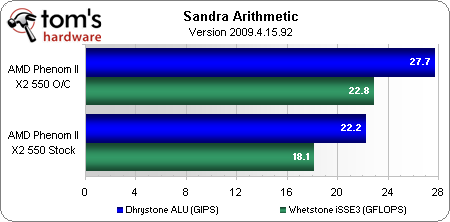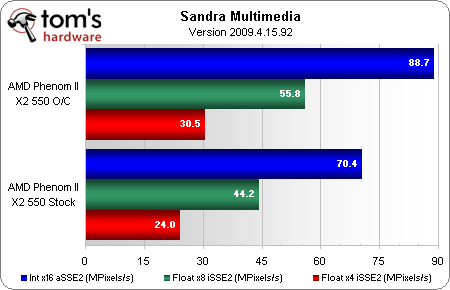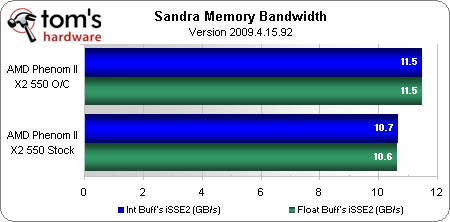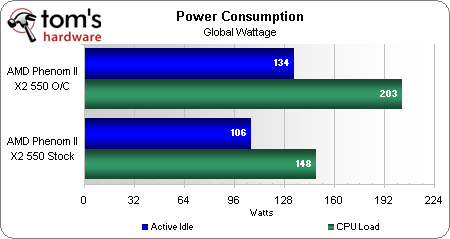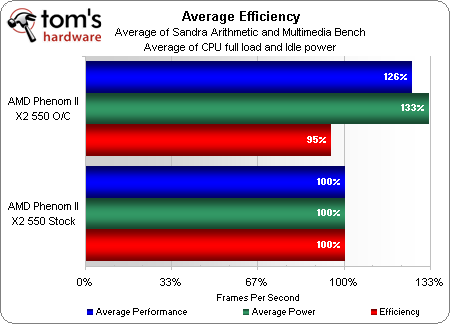Guide: Overclocking AMD And Intel CPUs On A Budget
Phenom II X2 550 O/C Performance And Efficiency
| AMD Phenom II X2 Test Settings | ||
|---|---|---|
| Default Settings | Overclock Settings | |
| CPU | AMD Phenom II X2 550 3.1 GHz 1MB L2+6MB L3 Cache, 1.288V | 3.94 GHz (19.5x 202 MHz), 1.50V |
| RAM | DDR3-1333 CAS 9-9-9-24, 1.50V | DDR3-1616 CAS 6-6-5-18, 1.65V |
| Motherboard | MSI 790FX-GD70 Socket AM3, 790FX/SB750, BIOS 1.3 (04/27/2009) | |
| Graphics | Zotac GeForce GTX260² 576MHz GPU, 999 MHz Shader, 896MB GDDR3-2484 | |
| Hard Drive | Western Digital VelociRaptor WD30000HLFS 300 MB, 10,000 RPM, 16 MB Cache | |
| Sound | Integrated HD Audio | |
| Networking | Integrated Gigabit LAN | |
| Software | ||
| Operating System | Microsoft Windows Vista Ultimate x64 SP1 | |
| Graphics | GeForce 182.08 Desktop |
A clock speed increase of 27% won’t surprise many experienced overclockers, but the Phenom II X2 550 started out at a fairly high 3.10 GHz. Its final clock rate of 3.94 GHz is fairly impressive for an AMD processor, even though the percent-gained is not. Does this increase translate directly into CPU performance?
CPU Arithmetic performance improved by 25%, while Multimedia extensions performance increased by 26%. The small difference between frequency improvement and performance improvement can likely be attributed to our use of a near-stock HT clock, as described on this guide’s previous page.
Our efforts to reduce memory timings using the processor’s highest memory ratio resulted in a tiny 8% gain in memory performance.
Average power consumption increased by 33%, mostly because of the increased CPU core voltage.
An average CPU performance increase of 26% at an average power increase of 33% yields an average efficiency decrease of around 5%. Overclockers looking for improved efficiency can instead choose a lower core voltage, as overclocking at stock voltage, though limited in performance gain, usually increases efficiency.
Get Tom's Hardware's best news and in-depth reviews, straight to your inbox.
Current page: Phenom II X2 550 O/C Performance And Efficiency
Prev Page Overclocking AMD's Phenom II X2 550 Next Page Overclocking AMD's Phenom II X4 955